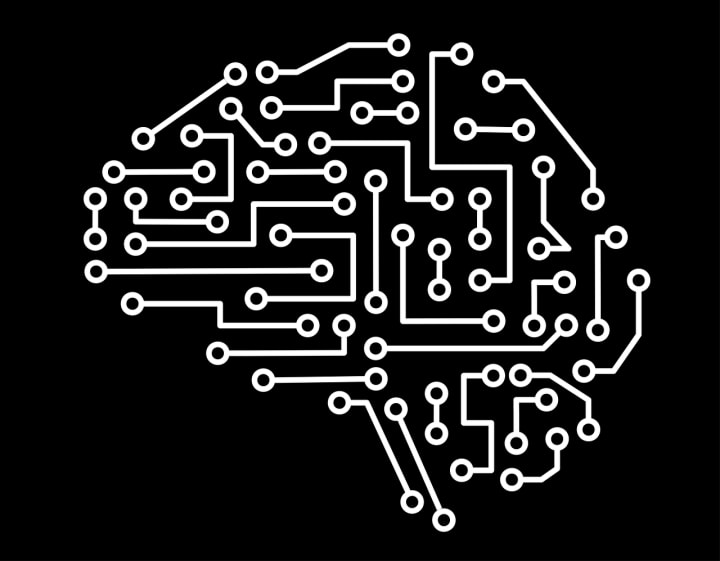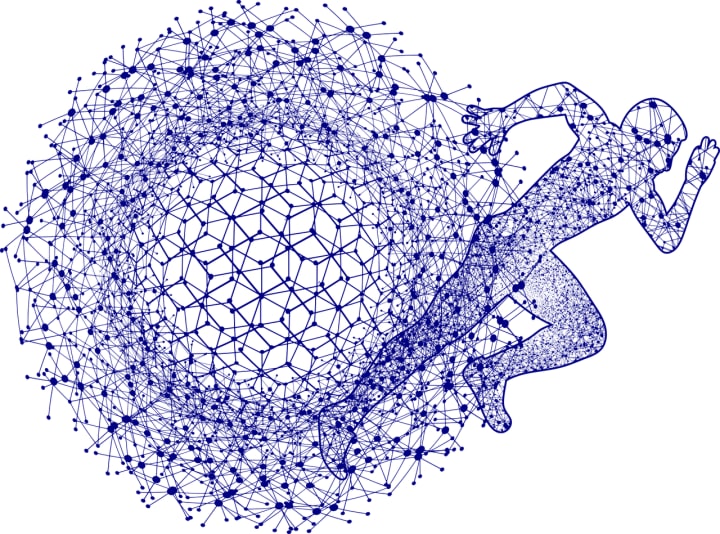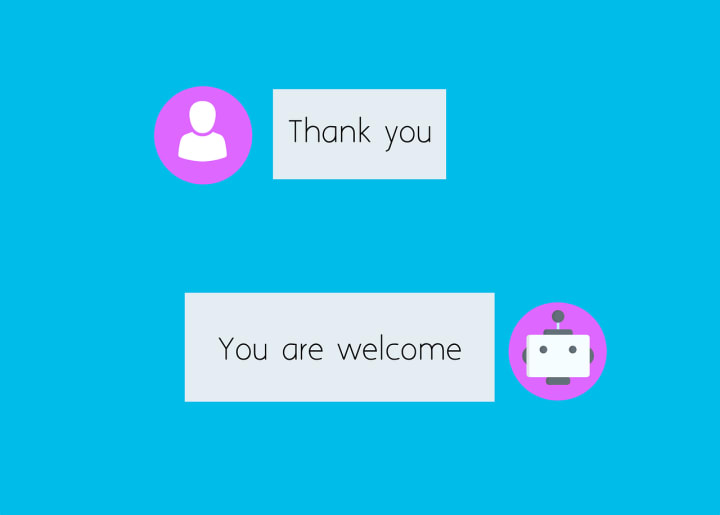"Exploring the Frontier: A Guide to the Top 10 Emerging Technologies"
Unlocking the Potential of Innovations Reshaping Our World

Here are the top 10 emerging technologies that are likely to play a significant role in shaping the internet shortly:
- Artificial Intelligence (AI) and Machine Learning (ML)
- Edge Computing
- 5G Networking
- Blockchain
- Virtual and Augmented Reality
- Internet of Things (IoT)
- Quantum Computing
- Automated Cybersecurity
- Chatbots and Conversational AI
- Cloud Computing and Storage.
1. Artificial Intelligence (AI) and Machine Learning (ML):

Artificial Intelligence (AI) refers to the simulation of human intelligence in machines that are designed to perform tasks that normally require human intelligence, such as visual perception, speech recognition, decision-making, and language translation.
Machine Learning (ML) is a subfield of AI that involves the use of algorithms to enable computers to learn and improve from experience without being explicitly programmed. ML algorithms use data as input to train models that can make predictions or decisions based on new data.
Both AI and ML are being widely adopted across various industries, including healthcare, finance, retail, and transportation, to automate tasks, make more informed decisions, and enhance customer experiences.
Some of the applications of AI and ML include:
- Predictive analytics and forecasting
- Image and speech recognition
- Natural language processing
- Fraud detection and cyber security
Personalized recommendations and customer service As these technologies continue to evolve and become more sophisticated, they are likely to play a major role in shaping the future of the internet and many other industries.
2. Edge Computing:

Edge computing is a distributed computing architecture where data processing and storage occur at the edge of the network, close to the source of the data, rather than in a central data center or cloud. The goal of edge computing is to reduce the latency and bandwidth requirements associated with sending data to a central location for processing.
Some of the benefits of edge computing include:
Improved Latency: By processing data closer to the source, edge computing reduces the amount of time it takes for data to be processed, resulting in improved latency and responsiveness.
Enhanced Privacy and Security: Edge computing can help protect sensitive data by keeping it closer to the source, reducing the risk of data breaches.
Increased Reliability: Edge computing can help improve reliability by processing data even when the network is unavailable, reducing the risk of system failures.
Lower Costs: By reducing the amount of data that needs to be transmitted over long distances, edge computing can help reduce the cost of data transmission.
Edge computing is expected to play a significant role in the Internet of Things (IoT), where millions of connected devices generate vast amounts of data that need to be processed in real-time. By processing data at the edge of the network, edge computing enables faster and more efficient data processing, making it an important technology for the future of the internet.
3. 5G Networking:

5G is the fifth generation of mobile network technology that promises to greatly enhance the speed, reliability, and capabilities of mobile internet. Some of the key features and benefits of 5G include:
High Speed: 5G networks are expected to offer significantly faster download and upload speeds compared to previous generations of mobile networks, enabling new use cases such as high-quality streaming and virtual reality.
Low Latency: 5G networks are designed to have much lower latency than previous generations, making real-time applications such as augmented reality and autonomous vehicles possible.
Increased Capacity: 5G networks are expected to support many more devices and users compared to previous generations, enabling the widespread adoption of the Internet of Things (IoT) and other connected devices.
Improved Reliability: 5G networks are designed to be more reliable, reducing the risk of dropped connections and improving the overall user experience.
5G networks are expected to be widely deployed in the coming years, enabling a range of new technologies and services that were previously not possible. This will include enhanced mobile internet experiences, new applications for IoT and connected devices, and new business models that leverage the capabilities of 5G networks.
4. Blockchain:

Blockchain is a decentralized and distributed digital ledger that records transactions across a network of computers in a secure, transparent, and tamper-proof manner. It was originally developed as the underlying technology for the cryptocurrency, Bitcoin, but has since been applied to a wide range of other use cases.
Some of the key features and benefits of blockchain technology include:
Decentralization: Blockchain operates on a decentralized network, meaning that there is no central authority controlling the ledger. This makes the technology highly resistant to censorship, fraud, and tampering.
Security: Blockchain uses cryptographic algorithms to secure transactions, making it nearly impossible to alter the ledger or steal information once it has been recorded.
Transparency: All participants in a blockchain network have access to the same information, making it possible to verify the authenticity of transactions and reducing the risk of fraud and corruption.
Immutability: Once a transaction has been recorded on the blockchain, it cannot be altered or deleted, ensuring a permanent and unalterable record of all transactions.
Efficiency: By eliminating intermediaries and reducing the need for trusted third parties, blockchain can greatly improve the efficiency and speed of transactions. Blockchain is being used for a wide range of applications, including financial services, supply chain management, voting systems, digital identity, and more. As the technology continues to mature and evolve, it is likely to play an increasingly important role in shaping the future of the internet and many other industries.
5. Virtual and Augmented Reality:

Virtual Reality (VR) and Augmented Reality (AR) are technologies that allow users to experience and interact with digital environments and information in a more immersive and engaging way.
Virtual Reality: VR involves the creation of a fully artificial digital environment that a user can interact with, typically through a headset or other VR device. VR is often used for gaming and entertainment, but it also has applications in areas such as education, healthcare, and training.
Augmented Reality: AR involves the overlay of digital information on the physical world, usually through a smartphone or tablet camera. This can include anything from text and images to animations and 3D models. AR is often used for a variety of purposes, including gaming, education, and marketing.
Some of the key benefits of VR and AR include:
Immersive Experiences: VR and AR allow users to experience and interact with digital environments and information in a highly immersive and engaging way.
Increased Productivity: VR and AR can be used to increase productivity by allowing users to perform complex tasks or simulations in a virtual environment.
Improved Training: VR and AR can be used to provide more effective and engaging training, reducing the cost and risk associated with traditional training methods.
Enhanced Customer Experience: VR and AR can be used to enhance customer experiences in areas such as e-commerce, marketing, and entertainment.
As VR and AR continue to evolve, they are expected to play an increasingly important role in shaping the future of the internet and many other industries, allowing for more immersive and engaging experiences across a wide range of applications.
6. Internet Of Things:

The Internet of Things (IoT) refers to the growing network of physical devices, vehicles, home appliances, and other items that are embedded with sensors, software, and network connectivity, allowing them to collect and exchange data.
Some of the key benefits of IoT include:
Improved Efficiency: IoT devices can collect and analyze large amounts of data, allowing organizations to make more informed decisions and improve the efficiency of their operations.
Enhanced Customer Experiences: IoT devices can be used to enhance customer experiences in areas such as home automation, wearables, and connected cars.
Increased Automation: IoT can automate many tasks, reducing the need for manual labor and improving the speed and accuracy of processes.
Better Data Insights: IoT devices generate large amounts of data, which can be analyzed to gain insights into trends, patterns, and behaviors.
Cost Savings: By automating tasks and improving efficiency, IoT can result in significant cost savings for organizations.
IoT is already having a significant impact on many industries, including manufacturing, healthcare, transportation, and more. As the technology continues to evolve and become more widely adopted, it is expected to play an increasingly important role in shaping the future of the internet and many other areas of society.
7. Quantum Computing:

Quantum Computing is a type of computing that uses quantum-mechanical phenomena, such as superposition and entanglement, to perform certain types of computations more efficiently than classical computers.
Quantum computers use quantum bits, or qubits, instead of classical bits, which allows them to perform many operations simultaneously. This makes them particularly well suited for certain types of problems, such as simulating quantum systems, solving optimization problems, and searching large databases.
Some of the key benefits of quantum computing include:
Improved Speed: Quantum computers can perform certain operations much faster than classical computers, which can lead to significant time savings in areas such as scientific simulations, cryptography, and machine learning.
Enhanced Performance: Quantum computers can perform some tasks that are infeasible or impractical on classical computers, allowing for new types of analysis and discovery.
Increased Security: Quantum computers can be used to improve the security of communication and information storage, by providing more secure encryption methods and faster factorization of large numbers.
Quantum computing is still in its early stages of development, and many technical challenges remain to be addressed before it can be widely adopted. However, as the technology continues to evolve and mature, it is expected to play an increasingly important role in shaping the future of computing and many other areas of society.
8. Automated Cybersecurity:

Automated Cybersecurity refers to the use of technology to automate various tasks and processes related to cybersecurity. The goal is to improve the efficiency and effectiveness of security measures while reducing the risk of human error and increasing overall security.
Some of the key components of Automated Cybersecurity include:
Threat Detection: Automated tools can help detect potential threats by continuously monitoring network activity and analyzing large amounts of data for signs of malicious activity.
Vulnerability Management: Automated tools can help identify and prioritize vulnerabilities in systems and applications, allowing organizations to quickly patch them before they can be exploited by attackers.
Incident Response: Automated tools can help automate the process of responding to security incidents, such as containing and remedying the effects of a breach, and alerting relevant parties.
Compliance Management: Automated tools can help ensure compliance with security regulations and standards by automating the process of tracking and reporting on compliance activities.
Security Operations Center (SOC) Automation: Automated tools can help improve the efficiency of security operations centers by automating tasks such as data collection, analysis, and reporting.
Automated Cybersecurity is an important tool for organizations looking to improve the security of their systems and data while reducing the risk of human error. As the threat landscape continues to evolve and become more complex, Automated Cybersecurity is expected to play an increasingly important role in the field of cybersecurity.
9. Chatbots and Conversational AI:

Chatbots and Conversation refer to the use of natural language processing and artificial intelligence technologies to enable computers to communicate with humans in a human-like way.
Chatbots can be integrated into various platforms, such as websites, messaging apps, and voice assistants, and can be used for a variety of purposes, including:
Customer Service: Chatbots can provide quick and efficient customer support, answering frequently asked questions and helping customers resolve issues.
Lead Generation: Chatbots can be used to engage with potential customers and collect information, such as their name, email address, and interests, to help generate leads.
Personal Assistance: Chatbots can be integrated into personal assistant platforms, such as smart speakers, to help users manage their day-to-day tasks and access information.
Marketing and Advertising: Chatbots can be used to engage with customers and provide personalized product recommendations and promotions.
Sales and E-commerce: Chatbots can be integrated into e-commerce platforms to help customers find products, compare prices, and complete transactions.
Chatbots and Conversational AI are expected to play an increasingly important role in shaping the future of human-computer interaction, as they provide a more natural and efficient way for people to communicate with technology.
10. Cloud Computing and Storage:

Cloud Computing and Storage refers to the delivery of computing and storage resources over the Internet on an as-needed basis.
With cloud computing, instead of using local servers or personal devices to store and process data, organizations can access shared resources, such as servers, storage, and applications, that are owned and maintained by a third-party provider. This can provide many benefits, including:
Cost Savings: Cloud computing can reduce the costs associated with owning and maintaining physical IT infrastructure, as organizations only pay for the resources they use.
Scalability: Cloud computing can easily scale up or down as needed, allowing organizations to quickly meet changing demands for computing and storage resources.
Accessibility: With cloud computing, organizations can access their data and applications from anywhere with an Internet connection, making it easier for employees to work remotely.
Security: Cloud providers typically have strong security measures in place, including data encryption and backup, to protect customer data.
Cloud Computing and Storage have rapidly become a major trend in the IT industry, with many organizations shifting from traditional IT infrastructure to cloud-based solutions. This trend is expected to continue, as more organizations look to take advantage of the benefits of cloud computing, such as increased efficiency, reduced costs, and improved flexibility.
Please note that this list is not definitive and the ranking may change as new technologies emerge and existing ones evolve.
About the Creator
DHINESH CR
Hi! My name is Dhinu and I am a passionate blogger who loves to write. I bring unique perspectives and insights to the table.
Reader insights
Outstanding
Excellent work. Looking forward to reading more!
Top insights
Expert insights and opinions
Arguments were carefully researched and presented
Eye opening
Niche topic & fresh perspectives






Comments (1)
This was a really insightful and though provoking article! Very informative!